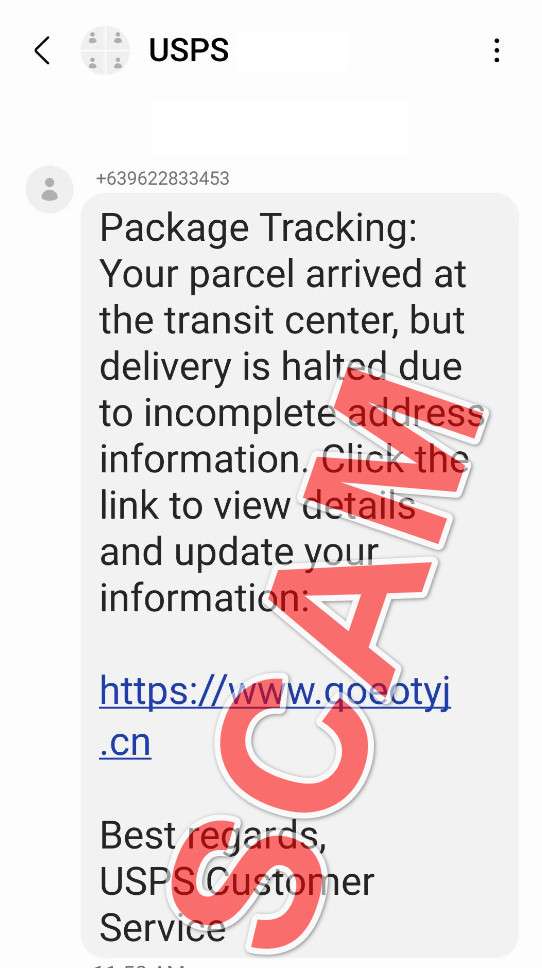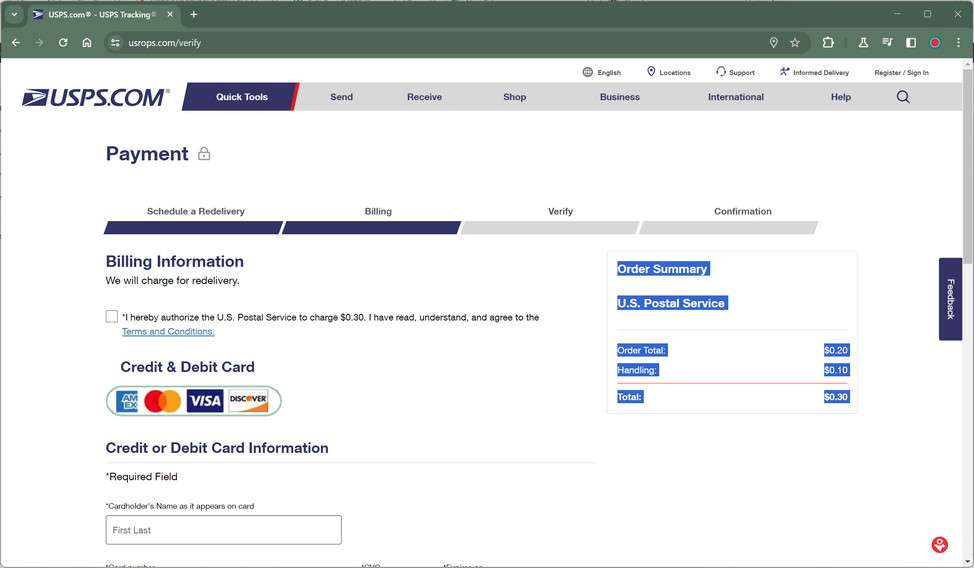You may have recently received an urgent text message that appears to be from USPS, claiming there’s an issue with a package delivery. Beware – this is a clever scam that can compromise your personal and financial data. In this comprehensive article, we’ll explain how this scam ensnares victims and what you need to do to protect yourself.
Reports indicate this con is circulating widely, with numerous victims reporting fraudulent “USPS delivery halted” text messages. The scam leverages the ubiquity of package tracking and a convincing spoofed text to trick users into providing valuable data.




An Overview of the Alarming USPS Delivery Halted Scam
This scam begins when a phony text message is sent stating that a package delivery has been halted due to an incomplete address. The message claims to be from USPS and provides a link to update your address and schedule redelivery.
However, the link directs victims to a sophisticated fake USPS website designed to harvest personal information and credit card data. This fraudulent site then uses financial details to make unwanted subscription charges or sells your data for illegal activity.
Here’s an example of the deceptive text message:
“USPS ALERT: Delivery attempt failed because the address on file was incomplete. Please update address here to reschedule delivery: http://usps-update45.com”
This text is intentionally crafted to cause panic and prompt urgent action. Most people have packages in transit regularly, so an unfinished delivery seems plausible. The scam message also spoofs the actual USPS SMS code to look authentic.
But the scam link redirects to a convincing counterfeit of the USPS website. This fake site displays tracking details for a non-existent package and claims your address is incomplete, preventing delivery.

You’re then prompted to enter personal data like your name, number, and address to “correct” the issue. In reality, this just hands all your info directly to scammers.
The deception continues if you then enter credit card details, as requested, to pay a small $1 “redelivery” fee. Scammers leverage your card for various illegal purposes, sign you up for unwanted services, or sell your data on the dark web.
This fraud is essentially phishing under the guise of an undelivered USPS parcel. But an awareness of the scam’s tactics can help you identify and avoid it.
How Does the USPS Delivery Halted Scam Work?
Let’s break down the step-by-step process used to perpetrate this troubling scam:
1. Victims Receive Fake USPS Text
The scam begins when a text is sent to a target’s mobile device. The message claims there’s an issue with a USPS delivery due to an incomplete address.
It provides a link to allegedly reschedule the delivery by updating your address details in their system. But the embedded link directs to a fake USPS site.
2. Users Redirected to Fraudulent USPS Website
If victims click the link, they’re redirected to an elaborate scam website dressed up to look like the real USPS site. This counterfeit site displays tracking details for a non-existent package.
It claims address information must be updated to complete the delivery. Scammers are counting on victims being anxious for a halted package.
3. Scam Site Requests Personal and Financial Details
The fraudulent site prompts users to enter their full name, phone number, home address, and email to allegedly fix the address issue. If victims provide this personal data, the scammers capture it.
The scam escalates as the site then requests credit card details to pay a $1 “redelivery fee.” If users enter their card info, the scam is complete.
4. Scammers Steal Entered Information
At this stage, the scammers have everything they want – your personal information and full credit card details. They promptly sell this data on the black market or use it directly for identity theft.
And if you entered your card information, they can make fraudulent purchases online or sign you up for unwanted recurring subscriptions. This small initial $1 charge often goes unnoticed by victims at first.
5. Criminals Monetize Stolen Data
With your information, scammers can now commit various forms of fraud or cybercrime:
- Selling your credit card number on the dark web
- Committing credit card fraud with unauthorized purchases
- Signing you up for recurring monthly billing subscriptions
- Opening new fraudulent accounts or taking out loans in your name
- Gaining access to and clearing out your bank account
- Filing fake tax returns to collect refunds in your name
The scale of damage is massive. Millions may be conned by this scam as SMS spoofing technology makes it easy to cast a wide net. Awareness of the scam tactics is key to avoiding this.
What To Do If You Fell for the USPS Delivery Halted Scam
If you suspect you entered personal information or credit card data into a fake USPS site, take these steps immediately:
- Contact your credit card company and bank to halt any unauthorized charges. Consider cancelling your card and requesting a new one.
- Monitor your financial accounts frequently for any suspicious charges or withdrawals, big and small.
- Put a fraud alert on your credit reports and review your reports from Equifax, Experian, and TransUnion.
- Reset all account passwords and enable two-factor authentication where possible. Avoid reusing passwords.
- Contact the credit bureaus to place a credit freeze restricting access to your credit reports. This makes opening new fraudulent accounts difficult.
- Report the scam to the FTC, FBI, FCC, and USPS to aid investigations and warnings. Provide details on the scam text, website, and any losses.
- Consider signing up for identity theft monitoring services to detect any suspicious activity involving your personal information. A credit monitoring service can also notify you anytime a new account is opened in your name.
Moving quickly can help reduce damages and prevent additional fraud if you fell prey to this scam. And reaching out to government agencies can support shutting down scam sites and mobile numbers.
How to Spot This USPS Delivery Scam Before Getting Hooked
Protect yourself from this scam by watching for these common traits:
Deceptive Text Messages
- Message comes from unknown number, not USPS’s verified SMS short code
- Contains grammatical errors uncommon in official messages
- Requests personal details or payment over text
- Includes suspicious links to typo domains or “http” sites
Fake USPS Website Red Flags
- URL looks official but site accessed has a strange domain
- Low resolution graphics and logos
- Security warnings or lack of “https” designation
- Fields requesting sensitive information like SSN or bank account numbers
- Credit card portal lacks standard security features and verification
Go slowly and trust your instincts. Only enter sensitive data after independently verifying the legitimacy of sites, not just based on a text prompt.
Frequently Asked Questions About the USPS Delivery Halted Scam
This FAQ provides key facts and advice regarding the fraudulent “USPS delivery halted” text message scam.
1. How can I recognize the USPS delivery halted scam text?
Watch for these telltale signs in the message:
- Claims delivery was stopped due to an incomplete address
- Says to click a link to update your address and reschedule
- Appears urgent, pressuring you to act quickly
- Comes from an unknown number, not USPS’s SMS short code
- Has typos, grammatical errors or other textual anomalies
- Asks for personal information or payment over text
Verify the sender ID before clicking any links.
2. What happens if I click the link in the scam text?
The link directs to an elaborate fake copy of the real USPS website. This fraudulent site requests your personal and financial information under the guise of resolving delivery issues. Entering any data hands it directly to scammers.
3. How can I identify the USPS scam website?
Warning signs of the fraudulent site:
- Suspicious domain name not associated with USPS
- Lack of “https” secure site designation
- Low resolution graphics and logos
- Requests for sensitive data like SSN or bank accounts
- Credit card portal lacks standard security features
Access USPS.com directly, don’t click text links.
4. What do scammers do with my information from the scam?
Scammers use your data for various criminal purposes:
- Credit card fraud with unauthorized purchases
- Selling your financial info on the black market
- Signing you up for unwanted subscriptions
- Commiting identity theft and opening fraudulent accounts
- Filing fake tax returns to steal refunds
- Draining your bank account funds
5. What should I do if I shared information on the fake site?
If you entered any data, take these steps immediately:
- Contact banks and card issuers to halt charges
- Monitor accounts closely for fraudulent activity
- Place fraud alert and check credit reports
- Reset account passwords and enable two-factor authentication
- Sign up for credit monitoring services
- Report the scam to USPS, FTC, FCC, and FBI
6. How can I avoid this USPS delivery halted scam?
Protect yourself with these tips:
- Don’t click links in texts from unknown numbers
- Verify the USPS SMS short code on suspicious texts
- Access USPS.com directly through your browser
- Slow down and assess sites before entering info
- Never provide sensitive data from out of the blue texts
Staying vigilant against phishing texts and verifying sites can help you steer clear of this scam.
Spreading awareness about this scam is crucial to preventing further victims. Following cautious online practices and trusting your instincts will keep your data safe from this fraud.
The Bottom Line
This USPS “delivery halted” scam offers a sobering case study in how convincing phishing texts and sites have become. Leveraging a real brand, this scam plays off victims’ anxieties around expected deliveries to instill urgency.
But with vigilance around links, awareness of tactics, and proactive protection steps, individuals can stay safe. Don’t let a random text prompt you to hand over the keys to your financial and personal data.
Remember, government agencies and companies will never request sensitive information by text. The damage from identity theft and credit card fraud can be massive. But a dose of digital literacy and healthy skepticism can stop this scam in its tracks.










